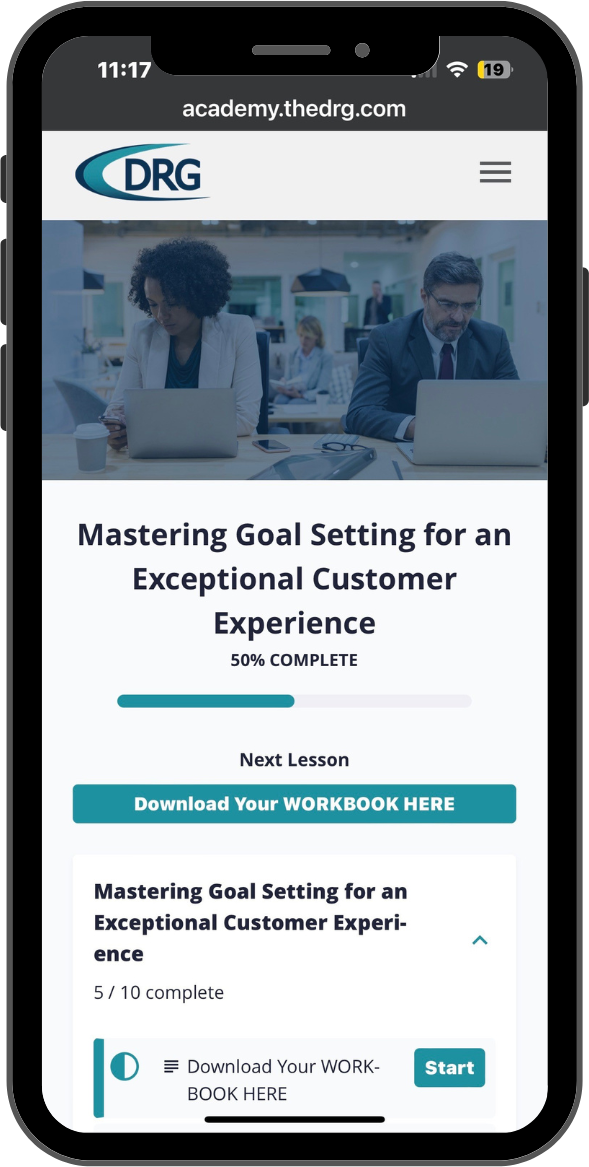CX Goal Setting: How Do You Measure Success?

Measuring (and proving) value on customer experience research initiatives can be notoriously difficult for many CX practitioners. And doing so often takes a lot of time, dedication, and coordination.
Fortunately, there are ways to set yourself up for lasting, repeatable success from the beginning when it comes to your CX research efforts. And the biggest way to get (and prove) the most value out of your customer experience initiatives is to begin with a goal setting approach for them that can help you deliver the highest impact.
We’ve developed a proven framework for setting more meaningful, measurable, and achievable CX goals with data-informed metrics that can be tracked over time. This approach has helped our clients become adept, agile, and strategic when it comes to crushing their CX goals and proving their success year over year. Now, we’re sharing (a few) of our secrets with you! And if you want more than a few of our secrets to successful CX goal setting, we have a training course for that (wink).
A Quick Overview: Marketing Research Metrics in CX Goal Setting
Marketing research plays a pivotal role in solving business challenges – especially those related to the customer (and many are in some way). Thoughtfully and strategically selected marketing research metrics can serve as useful guideposts for tracking your progress toward improving overall performance in any given area.
Monitoring the right metrics and setting meaningful goals helps companies:
-
- Evaluate performance in key CX areas
- Gauge company-wide progress on achieving business objectives
- Mobilize business teams to work together to drive customer growth
- Build up accountability and ownership across the organization
But, if you want to experience these benefits and see sustainable, repeatable success toward your goals, you must start by aligning them with your overall business growth strategy.
Need a framework for measuring the success of CX initiatives?

Check out our CX Goal Setting training course to access our time-tested approach to keeping customer experience initiatives on track with measurable and achievable goal setting.
Step 1: Align Your Goals with Your Business Strategy
Any goal-setting process should begin with a clear understanding of your corporate strategy and growth objectives, as well as the business need or challenge that prompted setting strategic improvement goals in the first place.
This context is critical to understand because, to be actionable, your goals ultimately need to be tied to specific aspects of your business strategy that will drive overall growth. For instance, building customer loyalty may be central to one company’s growth strategy, while driving new product growth with key customer segments could be top priority for another.
This is the most important and, unfortunately, most often overlooked step in the goal-setting process. But skipping this step can make success difficult and could result in having to go back to the drawing board halfway through your goal achievement timeline.
You’ll also need to understand how your customer perspective fits into and aligns with your overall company growth strategy by layering in relevant VoC, qualitative, and quantitative customer insights. This will ensure your goals are not just rooted in your business need, data, and insights, but also the reality your customers experience.
Step 2: Identify the Metrics That Best Align with Your Business Strategy
As soon as you have that clear vision and context outlined, you can begin identifying the few key or North Star metrics, their key drivers, and supporting metrics that can most effectively drive your strategy (and growth) forward in the direction you want it to go. This may be as straightforward as assessing whether any of the metrics currently being tracked need to be adjusted. It may also involve developing new benchmark metrics to capture new data moving forward.
Your North Star metric is the guiding metric that matters most to your company’s growth strategy and supports your overall corporate strategy – and some companies have more than one.
Tracking this metric or metrics, along with understanding the key drivers and the supporting metrics that may impact it, allows you to meaningfully track multi-faceted progress toward your goals.
Step 3: Evaluate Your North Star Metrics and Give Them Context
Once you hone in on the most important growth opportunities and the metrics that can best move the needle on them, conducting a thorough review of existing CX research and market intelligence on these metrics helps you understand where your company stands today. The objective here is to assess all information available on the identified north star metrics that will impact the customer. Sources of information might include one or more of the following:
Historical tracking data on key customer experience metrics (customer satisfaction, likelihood to repurchase, NPS, etc.)
Secondary research on current industry trends and economic forecasts
Competitive intelligence on key competitor performance on these metrics
Internal and external factors influencing metric performance
Outside benchmarking studies
Step 4: Establish Your CX North Star Metric Goals
Now that you’ve evaluated your north star metrics, it’s time to set your goals for each. It’s important that your goals are aspirational, yet realistic and achievable, based on everything you have learned through your metric evaluation. Depending on your situation, you may want to monitor progress on multiple metrics, or perhaps tracking just one will suffice in helping drive your goals forward.
Here’s a list of key questions to answer when setting your metric goals:
- What parameters will you put in place to evaluate significant movement on metrics and goals? Without these parameters, you could risk potential setbacks, inaccuracies, and resource waste.
- Taking into consideration existing business activities and calendars, how frequently should performance on goals be measured? Are significant shifts in metric performance likely to take place from month-to-month, on a quarterly basis, or over the course of a year?
- What budget is required for the scope and frequency of your metric measurement research?
- What is a reasonable metric goal to set, keeping in mind the impact of business activities, the scope of research, and the frequency of data collection? For example:
- What % increase in customer satisfaction is reasonable to expect based on current marketing activities and spending levels?
- What shift in customer loyalty is realistically achievable given current programs in place (customer service, product improvements, etc.)
- Will success in achieving goals be incorporated into internal performance evaluations? For example:
- Will business units be required to demonstrate ROI on key initiatives?
- Will individual employees be offered incentives for achieving measurable performance goals?
Step 5: Monitor Progress on Your Goals
Now it’s time to mobilize your resources toward monitoring your progress and achieving your goals. First and foremost, don’t chase the number or score only when monitoring progress. Organizations who meet and exceed their goals examine the WHY behind their scores and customer perceptions. This helps them create the best possible solution to improve customer experiences with the most efficient use of resources.
Second, ensure stakeholders and involved employees understand their role in achieving the goals. You can bring your metrics and goals to life by widely sharing them around your organization and providing tools to help stakeholders understand progress and keep the goals at the forefront of their strategies.
As you progress toward your goals, work with stakeholders to regularly monitor progress, review assumptions and hypotheses, and determine if and when to revisit the goals.
Need a framework for measuring the success of CX initiatives?

Check out our CX Goal Setting training course to access our time-tested approach to keeping customer experience initiatives on track with measurable and achievable goal setting.
Step 6: Create a Compelling Reporting and Socialization Strategy
After your improvement goals have been set and you’ve developed a plan for monitoring progress, the last, but perhaps most important step is to create an internal communication strategy using effective and impactful reporting tools. In order to drive accountability at the business unit and individual levels, employees need to be included in ongoing communication. Elements of a comprehensive communication plan include:
- Communicating key metric performance to all business units on a consistent basis through meetings, internal newsletters, and other engaging communication pieces
- Delivering reports and presentations to key stakeholders, showcasing the supporting metrics to clearly explain the reasons for performance outcomes
- Sharing metric goals, the rationale for how those goals were set, and the schedule for monitoring progress
- Action planning with business units to facilitate understanding of current performance, key drivers, and promote initiatives to reach goals
Incorporating marketing research metrics into your business strategy gives you a reliable way to gauge where you currently stand. It also provides you with the ability to measure your progress toward achieving company goals, drive internal accountability, and reward success along the way. Leveraging this goal setting process will help you set yourself up for measurable, sustainable, repeatable success on your CX efforts.

Want more? Check out our CX Goal Setting training course!
Get access to our full proven goal setting framework, guided learning at your pace, and tools to help you keep customer experience initiatives thriving and on track.

